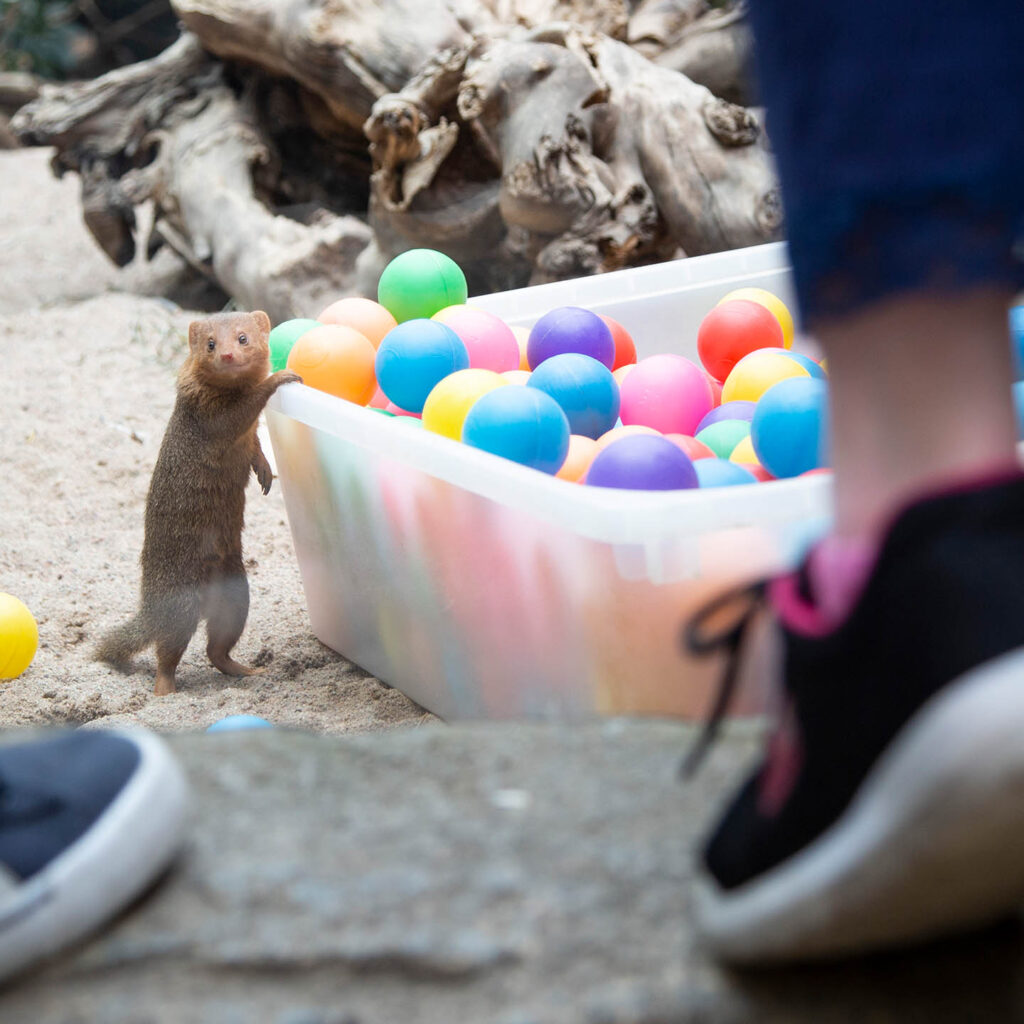Research for the benefit of animals
Understanding the lifestyles of endangered species is crucial for their protection. However, studying many species in the wild can be extremely challenging due to difficult terrain or the rarity of the animals. In zoos, on the other hand, it is easier to study things such as animal behavior and reproduction, as the individuals and their backgrounds are known, and camera systems provide round-the-clock data on the animals’ movements.
Research can also enhance the welfare of zoo animals by monitoring their behavior and conditions, and by developing new forms of enrichment. Devices with remote connections can track environmental factors such as temperature, humidity, sound levels, and light cycles. This ensures, for example, that the conditions in terrariums remain at optimal levels. Monitoring technologies can also used during animal transports.
The Wildlife Hospital at Korkeasaari Zoo is an important source of research material for studying native Finnish species. For instance, all rehabilitated birds released back into the wild are ringed, allowing for the collection of information about their future movements.
Research proceeds on the terms of the animals
Animal welfare is the ethical foundation of all operations at Korkeasaari Zoo, including research. When planning new studies, the benefits to both the individual and the species are carefully considered. Animals living in the zoo are not test subjects, and research must not cause them significant harm. For example, when the effects of anesthetics on different species has been researched, the animals were not anesthetized solely for research purposes: the data was collected during necessary medical procedures performed by veterinarians. The findings on anesthetic effects are also useful outside the zoo environment.
Collecting data on individuals and species in databases
An animal registry is maintained at Korkeasaari Zoo, recording the numbers of animals born, deceased, received, and transferred. Internationally, the Species360 Zoological Information Management System, or ZIMS, serves as a shared knowledge base for zoos and wildlife research institutions, containing individual-level data on animals and, by extension, their species. Information on more than 10 million animals from zoos, public aquariums, wildlife rescue centers, and research institutions is stored—this includes animals currently or previously living at Korkeasaari Zoo. International researchers can use this data and studbooks in their work.
Nearly all animals that die or are euthanized at Korkeasaari Zoo are examined at the pathology department of the University of Helsinki’s Faculty of Veterinary Medicine or at the Finnish Food Authority, and the resulting reports are archived. The findings help improve animal care practices. Some animals are sent to the collections of the Finnish Natural History Museum for potential future educational or research use. In some cases, blood and tissue samples or reproductive cells may also be preserved by freezing. In this way, animals can continue to contribute to knowledge of species care and biology even after death.
Zoo visitors as research subjects
The effectiveness of conservation communication and the visitor experience at the zoo can also be assessed through research. Various methods, for example surveys, observation, and interviews, are used to gather diverse information about the zoo’s approximately half a million annual visitors and their views and experiences.
Research can help examine, for example, how different communication methods, such as signs, presentations, or digital content, affect people’s conservation awareness and attitudes. By studying the experiences and perspectives of zoo visitors, Korkeasaari Zoo can improve its environmental education, communicate more clearly about conservation outcomes, enhance the visitor experience, and inspire people to take action for nature.
Monitoring the biodiversity of the island environment
Korkeasaari Zoo’s location on an island just off the coast of Helsinki provides excellent conditions for researching and monitoring local nature. The Korkeasaari island features forested areas, meadows, rocky slopes, and coastal ecosystems, which serve as important habitats for many species. The island’s garden was established as early as the 19th century, and today the zoo’s vegetation is surveyed and developed as part of the action program for safeguarding biodiversity.
Monitoring wild vegetation, insects, birds, and mammals helps to understand changes in species composition and the state of the ecosystem. At Korkeasaari Zoo, bird populations are monitored year-round, for example by participating in winter bird counts and BirdLife’s nest box survey. The island’s plant life is recorded in the web-based HORTIS database. This information can be used, for instance, in planning environmental management actions within the zoo.


